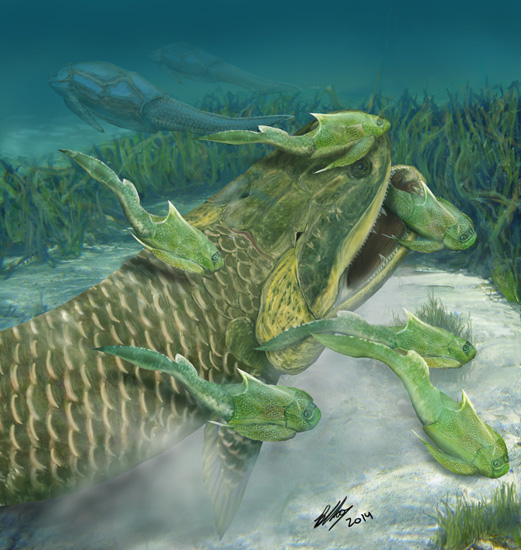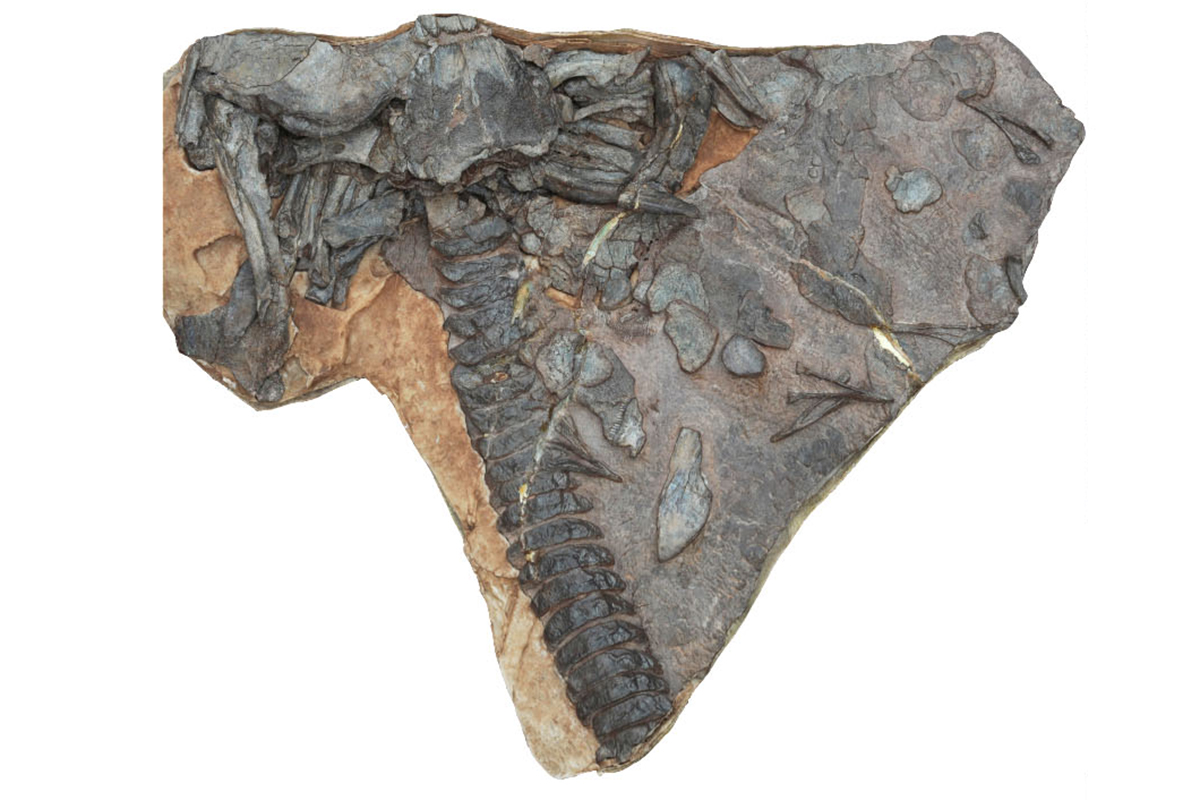| Location: Home > News > Events |
| New Scientist:Weird fish fossil changes the story of how we moved onto land |
|
Roughly 360 million years ago, one group of lobe-finned fish began evolving into four-legged, land-living animals that resulted in reptiles, amphibians and mammals like us.
Does it fit our evolutionary picture? (Brian Choo) Fossils have revealed many of the stages in this iconic evolutionary event. The evolutionary tree of species involved in the switch from sea to land has remained stable since the late 20th century, even as new fossils have come to light. However, a fossil discovered in a quarry in Ningxia, north China, now threatens that stability. It was discovered in 2002 by Min Zhu at the Institute of Vertebrate Paleontology and Paleoanthropology in Beijing and Per Ahlberg at Uppsala University in Sweden. The fossil belongs to a new species of lobe-finned fish, named Hongyu chowi. It was about 1.5 metres long, and lived 370 to 360 million years ago. This fish doesn’t fitBut when the researchers tried to fit H. chowi into the existing evolutionary tree, it didn’t fit easily. That’s because in some respects, H. chowi looks like an ancient predatory fish called rhizodonts. These are thought to have branched off from lobe-finned fish long before the group gave rise to four-legged land animals. But Ahlberg says H. chowi has aspects that look surprisingly like those seen in early four-legged animals and their nearest fishy relatives – an extinct group called the elpistostegids. These include the shoulder girdle and the support region for its gill covers.
Nature
This implies one of two things, the researchers say. The first possibility is that H. chowi is some sort of rhizodont that independently evolved the shoulders and gill cover supports of a four-legged animal. Alternatively, the rhizodonts may be more closely related to the four-legged animals and the elpistostegids than we thought. But this would also imply a certain amount of independent evolution of similar features, because the rhizodonts would then sit between two groups that have many features in common – features the two groups would have had to evolve independently. Ambush hunterH. chowi does look a lot like an early four-legged animal or an elpistostegid, says Martin Brazeau at Imperial College London. That could imply that different groups of lobe-finned fish independently evolved similar features, he says. The find confirms an earlier suspicion that there was independent or “parallel” evolution between the rhizodonts, the elpistostegids and the first four-legged animals, says Neil Shubin at the University of Chicago. “It has been a recurrent theme in the field.” H. chowi is also interesting for its unusual lifestyle, says Ahlberg. Its anatomy suggests it was an ambush predator that lurked just above the bottom, snapping at any smaller fish that swam too close – like some anglerfish do today. “Hongyu is one of the earliest examples of this lifestyle,” he says. Journal reference: Nature Ecology & Evolution, DOI: 10.1038/s41559-017-0293-5 Read more: Oldest broken bone reveals our ancestors’ switch to life on land |

